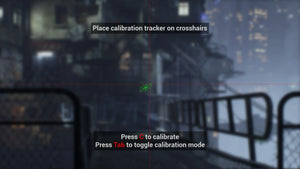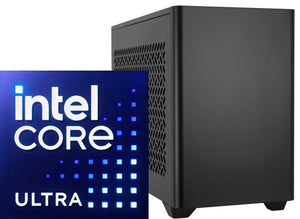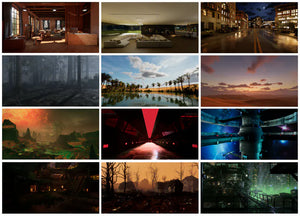Soundstage LED Technology Integration Guide

The film and television industry is witnessing a fundamental transformation in how productions create immersive visual environments. Modern soundstage LED technology has become the cornerstone of next-generation production facilities, replacing traditional green screens and physical sets with dynamic, high-resolution LED walls that create photorealistic backgrounds in real-time. This revolutionary approach to filmmaking allows directors and cinematographers to capture complex scenes with natural lighting and reflections, while actors perform in environments that respond instantly to creative changes.
Soundstage LED displays represent more than just technological advancement – they embody a complete paradigm shift in how stories are told and visual narratives are crafted. Productions ranging from blockbuster films to streaming series now rely on these sophisticated systems to achieve previously impossible shots while maintaining unprecedented creative control throughout the filming process.
Understanding Modern Soundstage LED Display Systems
Film studio LED installations transform traditional production spaces into versatile, technology-driven environments where virtual and physical elements seamlessly blend. These systems consist of ultra-high-resolution LED panels arranged in curved or straight configurations that surround performers and practical set pieces. The technology creates immersive backgrounds that extend beyond the visible frame, providing natural lighting and reflections that would be impossible to achieve with conventional post-production techniques.
The technical foundation of these systems relies on real-time rendering engines that synchronize camera movements with the displayed content. This synchronization ensures that background elements maintain proper perspective and parallax as cameras move through the scene. The result is a production environment where directors can make creative decisions in real-time, seeing the final composite image during filming rather than waiting for post-production.
Color accuracy and brightness consistency across large LED surfaces require sophisticated calibration systems and high-quality LED modules specifically designed for broadcast and film applications. These displays must maintain consistent color temperature and brightness levels while providing sufficient dynamic range to match traditional film lighting techniques.
Planning Your Production Facility Upgrade
Production facility upgrades require careful consideration of multiple technical and operational factors that impact both immediate implementation and long-term production capabilities. The planning phase determines the success of the entire installation and its ability to serve diverse production requirements.
Space Requirements and Configuration Options
The physical dimensions of your production space dictate the scale and configuration of your LED wall installation. Curved LED walls provide more immersive environments but require larger spaces and more complex content creation workflows. Straight wall configurations offer flexibility for smaller spaces while still providing significant production advantages over traditional methods.
Ceiling height considerations affect both the visual impact of the LED wall and the practical aspects of lighting and camera positioning. Higher ceilings allow for more dramatic camera angles and better integration of traditional lighting equipment with the LED display system.
Power Infrastructure and Environmental Controls
LED wall installations require substantial electrical infrastructure upgrades to handle the power demands of high-brightness displays and associated cooling systems. Proper power distribution and backup systems ensure uninterrupted operation during critical filming sessions.
Climate control systems must account for the heat generated by LED panels and associated processing equipment. Maintaining consistent temperature and humidity levels protects both equipment and ensures stable color performance throughout extended filming sessions.
Network Infrastructure and Data Management
High-resolution LED walls require robust network infrastructure capable of handling massive data streams in real-time. Multiple 4K and 8K video feeds must be distributed and synchronized across numerous display panels without latency or quality degradation.
Data storage and management systems must support the massive file sizes associated with high-resolution background content while providing rapid access for real-time playback and manipulation during filming sessions.

Technical Implementation and Integration Process
The implementation of LED wall soundstage systems involves multiple phases of installation, calibration, and integration with existing production workflows. Each phase requires specialized expertise and careful coordination to ensure optimal performance and reliability.
Hardware Installation and Mounting Systems
Professional LED panel installation requires precision mounting systems that maintain perfect alignment across large surfaces while providing access for maintenance and individual panel replacement. The mounting structure must support significant weight while maintaining stability during extended use.
Cable management systems organize the extensive network and power connections required for each LED panel while maintaining clean sight lines and safe working conditions for production crews.
Display Calibration and Color Management
Individual LED panels require precise calibration to ensure seamless integration across the entire display surface. Color temperature, brightness, and gamma correction must be uniform across all panels to prevent visible seams or color shifts that could affect the final image quality.
Professional calibration equipment and software validate display performance and create correction profiles that maintain consistency over time as LED panels age and performance characteristics change.
Real-Time Rendering Integration
The integration of real-time rendering systems with camera tracking technology enables the synchronized display of background content that responds to camera movements. This integration requires sophisticated software solutions that process camera position data and adjust display content in real-time with minimal latency.
Testing and validation procedures ensure that the entire system operates reliably under the demanding conditions of professional film and television production.
Content Creation and Workflow Optimization
Successful LED wall productions require specialized content creation workflows that account for the unique characteristics of LED displays and real-time rendering requirements. Traditional post-production techniques must be adapted to work within the constraints and opportunities of virtual production environments.
Virtual Environment Development
Creating photorealistic virtual environments requires specialized 3D modeling and texturing techniques optimized for real-time rendering. Environmental assets must maintain high visual quality while operating within the processing limitations of real-time graphics systems.
Lighting design for virtual environments must consider the interaction between LED wall illumination and practical lighting on set. Virtual lighting must complement physical lighting setups to create natural-looking composites.
Camera Tracking and Perspective Correction
Accurate camera tracking systems monitor camera position and orientation in real-time, adjusting the perspective of virtual backgrounds to maintain proper spatial relationships. This technology enables complex camera movements while maintaining the illusion of depth and dimension in the LED wall content.
Integration with traditional camera support equipment ensures that LED wall systems work seamlessly with existing production workflows and equipment preferences.
Real-Time Color Grading and Adjustment
On-set color grading capabilities allow directors and cinematographers to make immediate adjustments to the LED wall content, matching color temperature and creative vision without waiting for post-production. This real-time control enables more efficient production schedules and better creative decision-making during filming.

Studio Modernization: ROI and Production Benefits
Studio modernization through LED wall technology provides measurable returns on investment through reduced production costs, increased booking rates, and enhanced creative capabilities that attract high-value productions.
Cost Reduction Through Virtual Production
LED wall technology eliminates many traditional production costs associated with location shooting, set construction, and extensive post-production visual effects work. Productions can achieve complex visual sequences without the logistical challenges and expenses of remote filming or large-scale set builds.
The ability to shoot multiple environments and time-of-day scenarios within a single studio session reduces overall production schedules and associated crew costs. Background changes that would previously require entire day relocations can now be accomplished in minutes.
Enhanced Creative Control and Flexibility
Real-time visualization capabilities enable directors to see final composite images during filming, allowing for immediate creative decisions and adjustments. This enhanced control reduces the uncertainty and expense associated with extensive post-production corrections.
The ability to modify virtual environments in real-time enables exploration of creative alternatives without the time and cost penalties associated with traditional production methods.
Competitive Advantage in the Market
Studios equipped with state-of-the-art LED wall technology attract premium productions seeking cutting-edge capabilities. The unique visual possibilities enabled by these systems justify higher rental rates and extended booking commitments from production companies.
The versatility of LED wall systems allows studios to serve diverse production types, from intimate commercial shoots to large-scale film productions, maximizing utilization and revenue potential.
Safety Considerations and Industry Standards
Professional LED wall installations must meet stringent safety requirements and industry standards to ensure the protection of cast and crew members during production activities.
Electrical Safety and Code Compliance
LED wall installations require compliance with local electrical codes and entertainment industry safety standards. Professional electrical installation and ongoing maintenance ensure safe operation under the demanding conditions of film and television production.
Emergency power systems and fail-safe mechanisms protect both equipment and personnel in the event of power disruptions or system malfunctions.
Structural Safety and Load Management
LED panel mounting systems must meet structural engineering requirements for the loads imposed by large-scale display installations. Professional engineering analysis ensures that mounting structures can safely support the weight and dynamic loads of LED panels and associated equipment.
Light Safety and Eye Protection
High-brightness LED displays require consideration of light exposure levels and potential effects on cast and crew members. Professional installations include controls and monitoring systems that maintain safe light levels while providing the brightness necessary for proper camera exposure.
Future Trends and Technology Evolution
The rapid evolution of LED display technology and real-time rendering capabilities continues to expand the creative possibilities available to filmmakers and content creators.
Resolution and Display Quality Improvements
Ongoing improvements in LED panel resolution and color reproduction capabilities enable even more photorealistic virtual environments. Higher pixel densities reduce visible pixel structure at close camera distances, expanding the range of shots possible with LED wall backgrounds.
Processing Power and Real-Time Capabilities
Advances in graphics processing technology enable more complex virtual environments and real-time effects that rival traditional post-production quality. These improvements expand the range of production scenarios that can benefit from LED wall technology.
Integration with Emerging Technologies
The integration of LED wall systems with virtual reality, augmented reality, and artificial intelligence technologies opens new creative possibilities for interactive and responsive virtual environments.

Conclusion
Soundstage LED technology represents a transformative shift in film and television production, offering unprecedented creative control and cost-effective solutions for complex visual storytelling. The integration of these systems requires careful planning, professional implementation, and ongoing optimization to realize their full potential.
Studios investing in LED wall technology position themselves at the forefront of industry evolution, providing production teams with the tools necessary to create visually stunning content efficiently and cost-effectively. The combination of technical sophistication and creative flexibility makes LED wall installations essential infrastructure for modern production facilities.
The successful implementation of soundstage LED systems depends on understanding both the technical requirements and creative applications of this revolutionary technology. As the industry continues to evolve, LED wall technology will undoubtedly play an increasingly central role in how visual stories are conceived, produced, and realized.
Frequently Asked Questions
Q: What are the primary advantages of LED wall technology over traditional green screen production?
A: LED wall technology provides several key advantages over traditional green screen methods. The most significant benefit is the ability for actors to see and react to their environment in real-time, leading to more natural performances. LED walls also provide natural lighting and reflections on subjects, eliminating the need for extensive post-production compositing work. Additionally, the technology allows directors to see the final composite image during filming, enabling immediate creative decisions and reducing costly post-production revisions.
Q: How much space is required for a professional LED wall installation?
A: Space requirements for LED wall installations vary significantly based on the desired configuration and production needs. A basic straight wall setup requires a minimum of 40 feet in width and 20 feet in height, with at least 25 feet of depth for camera positioning. Curved LED wall configurations that provide more immersive environments typically require circular spaces with diameters of 60-80 feet and ceiling heights of 25-30 feet. The specific dimensions depend on the scale of productions the facility intends to serve.
Q: What is the typical return on investment timeline for LED wall installations?
A: The return on investment for LED wall installations typically ranges from 18-36 months, depending on facility utilization rates and local market conditions. Studios that achieve high booking rates with premium productions often see returns in the shorter timeframe, while facilities serving smaller productions or operating in competitive markets may require longer periods. The key factors affecting ROI include reduced location costs, increased booking rates due to enhanced capabilities, and the ability to command higher rental rates for cutting-edge technology.
Q: How does camera tracking work with LED wall systems?
A: Camera tracking systems use various technologies including optical sensors, inertial measurement units, and encoder systems to monitor camera position and orientation in real-time. This data is processed by the LED wall's rendering system to adjust the perspective of virtual backgrounds, maintaining proper spatial relationships as the camera moves. The tracking system ensures that virtual elements appear to have proper depth and dimension, creating the illusion that the LED wall extends infinitely beyond its physical boundaries.
Q: What are the ongoing maintenance requirements for LED wall systems?
A: LED wall systems require regular maintenance to ensure optimal performance and longevity. Daily maintenance includes visual inspections for damaged pixels or panels, cleaning of LED surfaces to maintain brightness and color accuracy, and verification of system calibration settings. Monthly maintenance typically involves more thorough cleaning, cable connection inspections, and performance testing of all system components. Annual maintenance includes professional calibration services, replacement of aging LED modules, and updates to software and control systems.
Q: Can existing soundstages be retrofitted with LED wall technology?
A: Most existing soundstages can be retrofitted with LED wall technology, though the extent of modifications required varies significantly based on the facility's current infrastructure. Key considerations include electrical capacity upgrades to handle LED wall power requirements, structural modifications for mounting systems, and improvements to climate control systems. Older facilities may require more extensive renovations, while newer soundstages often need only minor modifications to accommodate LED wall installations.
Q: What types of content work best with LED wall production techniques?
A: LED wall technology excels with content featuring outdoor environments, expansive landscapes, urban settings, and any scenario where traditional set construction would be prohibitively expensive or logistically challenging. The technology is particularly effective for automotive commercials, sci-fi productions, historical recreations, and any content requiring multiple environment changes within a single shooting day. However, LED walls are less suitable for extreme close-up work or productions requiring very specific practical lighting effects that cannot be replicated through virtual lighting.




